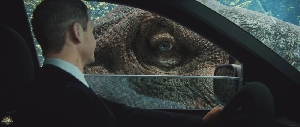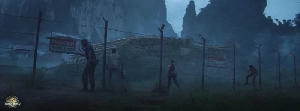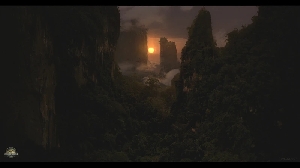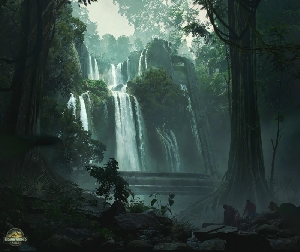Mr.happy debates with carnosuar
Dinosaurs Forum Topic

Tyrant king
MemberCompsognathusNov 19, 20145209 Views42 RepliesOxalia vs tarbosaurus.
mr.happy has tarbosaurus and carnosaur has oxalia.
one week begin!!!!!!!!!
Replies to Mr.happy debates with carnosuar
Hey Guest, want to add your say?
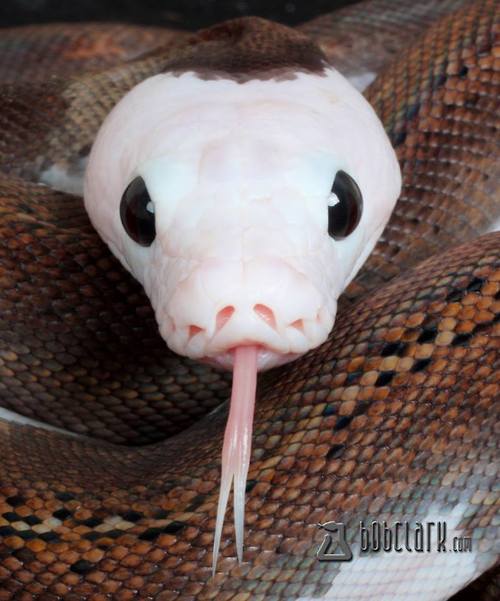
Nature doesn't deceive us; it is we who deceive ourselves.
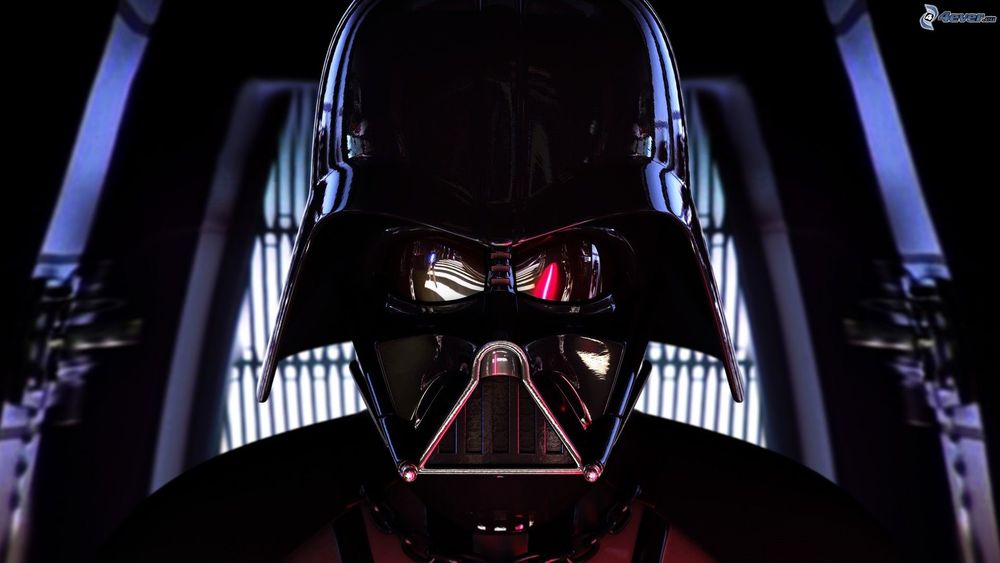
Ain't got nothing at the ready ATM fir the debate, but I have one thing to say to my opponent.
I know we've had our differences in the past, but let's not let our bad times get to us here. Just a clean, Tarbo is better than Oxalaia (or the other way around of course) debate.
Jack of all trades. Master of none

Agreed; i'll open this one up. Starting with the size of O. quilombensis:
O. quilombensis is a rather enigmatic spinosaur found in south america. Why so enigmatic? because its size is a subject of constant debate. However, i'll put some of the controversy to rest here.
The often talked about 1.35 m skull(and in turn 12+ m body length) is very dubious, and i'm 100% skeptical of it -- the premaxillae isn't that large.
Basing off of the fragments and comparing them with that of S. tenerensis, we get ~1.2 m for the skull length. Which puts it on par with Suchomimus in overall size -- 11 m and 3.5 tons
It has been suggested that O. quilombensis is just another species of Spinosaurus.
http://yutyrannus.deviantart.com/journal/Oxalaia-or-Spinosaurus-in-Cretaceous-Brazil-485191553
Using the new basis for the S. aegyptiacus finds, downscaling S. aegyptiacus to 11m gives a weight of 3-4 tons.
In conclusion, Oxalaia was a Suchomimus sized Spinosaur at 11 m, 3.5-4 tons in weight.
Tarbosaurus has gone through dramatic size reduction as well though. Most tarbosaurus are actually just roughly comparable in size to a biggish daspletosaurus.
I find a 12 m tarbosaurus highly questionable... Happy, do you have anything suggesting a 12 m figure?
Anyway, Tarbosaurus skulls are ~1.1m long at most (Maleev 1955) That's comparable to D. torosus and A. Sarcophogus. This exception to this, though, is PIN 551-1, the holotype, which is 122cm in premaxilla to occipital according to Maleev. An overall skull length would be ~1.2 - 1.3 m.
12 meter estimates were mainly due to a drastically elongated tail(same reason that T. rex was believed to be 14 m when it was discovered.
A more realistic figure, IMO, gives a total length of 10m for PIN 551-1 and a little less than 9m for PIN 551-3...In any case it does not appear we can confidently claim there’s any known tarbosaurus specimen exceeding 11m.
The bigger specimens of D. torosus are around 3 tons in weight(Pete 3 is figured to be ~3.5 tons, yet i haven't seen a full description on this) Tarbosaurus was somewhere between D. torosus and T. rex in overall body build, so a median weight of 3 tons is perfectly acceptable imo. PIN 551-1 is the exception here, perhaps weighing in at 4 tons.
Overall, they're pretty similar in overall mass but O. quilombensis was an animal that shared its habitat with large Carcharodontosaurids, Ekrixinatosaurus, and a variety of other smaller predsators. T. bataar is the only gigantic predator in its realm, so interspecific conflict was pretty limited(Z. magnus lived a couple million years before, despite common belief)
Also, if O. quilombensis was like S. aegyptiacus in overall build, it would have large arms that it could utilize here. Forelimbs are often used to "grapple" with prey, and manipulate the head of another rival predator(an example can be seen with leopards & hyenas) Spinosaurid skulls are resistant to lateral forces as well( an adaptation in dealing with catching fish) so, a wriggling similarly sized tyrannosaur isn't going to do much to O. quilombensis' jaws.
Nature doesn't deceive us; it is we who deceive ourselves.

Oh, right, you do this for a career, don't you? I'll do my best.
Jack of all trades. Master of none

Nature doesn't deceive us; it is we who deceive ourselves.

ah, i am following in your footsteps. i want to be a paleontologist some day.

Ah, not a career, but classes, a career choice, and extensive research.
I'm working on something based off of what I read that you said (no, I do not have anything proving a 12m Tarbo).
Overall, I'll do my best with the time I've got, but I've got several things on the go at home.
Jack of all trades. Master of none
Man if I get to do this for a whole week I;m gonna be going from to much time on my hands, to no where near enough. But it will deffinatly be a fun way to kill time.
" It is better to be reviled than ignored, agleast then you know your spreading good in this world."

Nature doesn't deceive us; it is we who deceive ourselves.

So long as there's no cussing and insults, I'm cool with it.
Jack of all trades. Master of none

Make this an interesting debate and I'll certainly feauture it. I'm pretty sure it will be, Carno made a excellent start.
IT'S TIME TO DU-DU-DU-DU-DUEL!!!
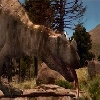
Nice Carnosaur! Happy can't wait for you turn, also when did you come back?
Sorry I'm just a bit behind, this week I have had my first ever end year of exams, tomorrow is the last, Geography...year 7 has gone ucik first year of hig school almost over, few!
So yeah, hi! :D
I want to be a palaeontologist, but I'm still 13 and in school :P

CARNOSAUR - Your preliminary information is extremely interesting and well presented! The vast majority of the composition is all new to me; just one of the many reasons why I greatly enjoy reading the posts you deliver! Keep up the fantastic work! :)
MR. HAPPY9097 - I'm extremely impressed by your willingness to let bygones be bygones - that takes an incredible amount of introspection! If the day ever comes where I've been party to an incredibly heated exchange, I hope I'll have the same amount of dignity and intellectual honesty as you to look beyond it. That aside, I just know you'll present incredibly interesting and thought-provoking facts for this debate! :)

Well, finally got something together, sorry it ain't better, got plenty on the go at the moment, and for the rest of the winter.
From what I've just seen here, they are similar size. True, Oxalaia lived with other large predators, such as Ekrixinatosaurus (god I hate spelling that bugger's name) and Giganotosaurus, which would likely result in some interspecies conflict here and there, but perhaps not as often as one would think.
Being a Spinosaur, and being half the size of the largest predators in its area, while similar to others in size, it would likely have, like its larger cousin, Spinosaurus, stuck around rivers and ate fish most of the time. It would most likely have avoided competition if it could in normal situations, but come a drought or some other shortage of food, yes, it would be put into competition with its neighbours.
As for Tarbosaurus, yes, it was the dominant predator of the region and had little competition. However, during the mating season, territorial disputes, and fights for food, there would have been competition with other Tarbosaurus. Same for Oxalaia, but Tarbo may have had battles with more fatalities or critical injuries if it came down to a battle because of the higher bite force, capable of crushing bone. Sure, Oxalaia battles may draw more blood due to the slashing, but Tarbo battles likely had the higher fatality rate.
If the two were to fight, it's entirely possible they could kill each other, Tarbo biting the neck and crushing bone, but Oxalaia creating enough and/or large enough cuts to cause Tarbo to die of blood loss or infection. If one were to win more often than not though, I'd put my money on Tarbo if I was a betting man.
Jack of all trades. Master of none

Good points, however...just a few things..
Being a Spinosaur, and being half the size of the largest predators in its area, while similar to others in size, it would likely have, like its larger cousin, Spinosaurus, stuck around rivers and ate fish most of the time
The G. carolinii holotype was ~12.6 meters, 6.5-7.2 tons. The dentary, of the paratype(only fossils for this creature, suggests an animal approx. 6.5% larger. However, we can not explicitely state this because individual variation is a very likely scenario here. But, i digress. By my calculations, this animal would be 13.0 -13.3 m, 7 - 7.5 tons in weight. So, a median between the two ( 12.8 m; 7 tons) is a perfectly rounded number. So, it could be twice as large, but there isn't anything conclusive to prove this.
Ekrixinatosaurus was significantly smaller then previously thought. Basing off of scorpiovenator, we get ~7.4 m, 1800 - 2000 lbs. Fractionally the size of O. quilombensis. The only real threat to O. quilombensis was G. carolinii, and even then perhaps it wouldn't serve much of a threat. It was, in all likelyhood, the apex predator of the estuarial water ways and rivers. Competition between the three for resources is something i equate to the savannahs of africa; Giganotosaurus being the lion, Oxalaia being the saltwater croc, Ekrixinatosaurus being the hyena. These three species interact quite frequently, and compete for resources. That scenario is just imo, though.
However, during the mating season, territorial disputes, and fights for food, there would have been competition with other Tarbosaurus. Same for Oxalaia, but Tarbo may have had battles with more fatalities or critical injuries if it came down to a battle because of the higher bite force, capable of crushing bone
A crushing bite isn't a 100% killing rate. Stan, for example, survived bites that went straight through his brain case. Face biting in tyrannosaurus rex is a well documented phenomenon -- and the wounds healed, indicating that they survived these bouts.
"Examination of museum collections has revealed four specimens of Tyrannosaurus rex that bear tooth marks made by large, carnivorous dinosaurs. Because Tyrannosaurus is the only large carnivore known from the Late Maastrichtian of western North America, we infer thatTyrannosaurus made these tooth marks."
...The marks are interpreted as feeding traces and these fossils therefore record instances of cannibalism. Given that this behavior has a low preservation potential, cannibalism seems to have been a surprisingly common behavior in Tyrannosaurus, and this behavior may have been relatively common in carnivorous dinosaurs"
http://www.plosone.org/article/info%3Adoi%2F10.1371%2Fjournal.pone.0013419
^ bite marks on T. rex bones made by other tyrannosaurus. Some healed, others not. Canniblism, like in modern animals, was probably prevalent in T. rex as well as its asian counterpart, T. bataar. Does this mean that the large tyrannosaurs were the only ones to engage in such violent confrontations? certainly not. Moreso that we have more specimens of T. rex and kin then most other theropod dinosaurs.
And the big spinosaurs were certainly no exception. For example,piscivorious animals -- such as american alligators, saltwater & nile crocodiles commonly fight with other predators in their realms

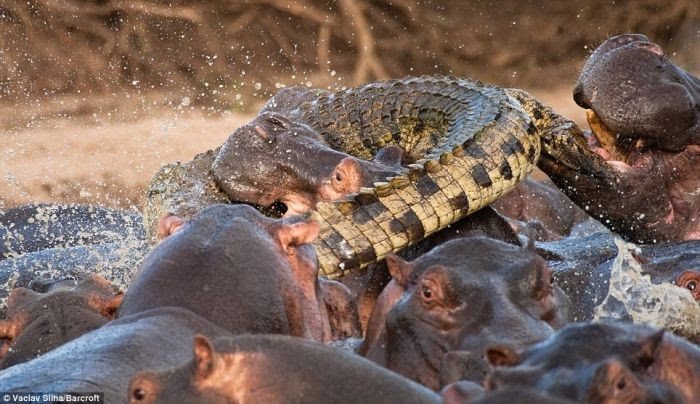
Cannibalistic as well..

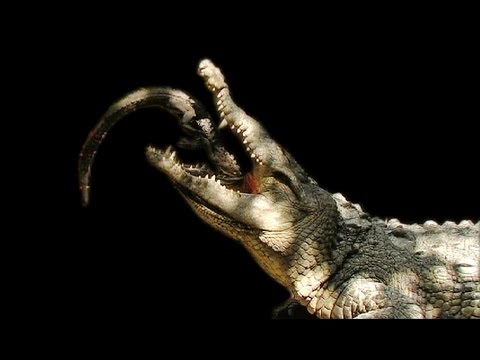


So, i would say its safe to say that the larger spinosaurids( spinosaurids in general, really) didn't actively search for fights, but when confronted with no other options, would stand their ground & fight -- like the pictures i've shown above.
Again, i re-iterate that just because we haven't found as much evidence of such encounters, doesn't mean they wouldn't occur.Additionally, we cannot say which species of theropod dinosaur is more aggressive then the other based on the fragmentary state of the fossil record.
Nature doesn't deceive us; it is we who deceive ourselves.

When I said "half the size," that was a reference to weight, not length, as length is a poor method for size (Giga and Rex being similar in weight, despite Giga being a few feet longer, for example would be a poor way to justify saying Giga was larger, even if Rex was slightly heavier, therefore larger, but that's a different debate). And maybe not twice as big, but a substantial weight difference.
Was not aware of the size reduction of Ekrix.
Interesting scenario with the African plains reference, but perhaps not the most accurate. The crocs were heavier than the lions, and would kick a lions ass in or near water. Oxalaia however, was half the weight of Giga, give or take of course.
Most likely, given the choice, Oxalaia would retreat from its larger neighbour. If it came down to no choice do or die, sure, it would take the Giga on. If it's going to go down, may as well go down fighting, and maybe it'll surprise itself, and it will surprise Giga, and possible escape with its life. I'm not sure about you, but if I had to fight some guy damn near twice as big as I am, I'm ditching first shot I get.
I know, a crushing bite force isn't 100% effective. Almost nothing is 100% effective. However, a crushing bite force does cause trauma, which is still pretty bad and is going to hurt like a SOB for a bit. Slashing however, will sting for a while and is arguably better for quick attacks, but once the bite hits, damage is going to be done. In the case of Stan, possibly what happened was he was knocked unconscious by the bite, so his opponent had no reason to continue fighting and left, therefore defeating Stan. A crushing bite force isn't a 100% kill rate, but it is still a useful weapon to have, and would likely cause the opponent to back off after a good bite or two.
Jack of all trades. Master of none

Nature doesn't deceive us; it is we who deceive ourselves.

If Oxalaia was proportioned like Spinosaurus, it would have been rather low to the ground. The following image is Rex and Spino.

Rex and Spino are similar in weight, though Spino may be a ton or two heavier, yet Rex is substantially taller if you remove the sail. Assuming Tarbo and Oxalaia are proportioned similarly, the neck would appear to be a rather easy target. Assuming Oxalaia would be reared up a bit and facing Tarbo head on, it would likely be able to rear up quickly and get a slash in. However, it doesn't seem like it would be able to easily or effectively get a bite in. The claws could do some damage, yes, but the neck and head are also long, and may not be used as effectively as you think. Oxalaia could have easily slashed something that was beside or underneath it, and something it was biting, but if it wasn't biting it, it wouldn't be able to get something in front of it.
Jack of all trades. Master of none

Damn it! I am seriously urging to say something!
There is no such thing as a pure predator. A meat-eater is eit

LORD OF THE SPINOSAURS - I know what you mean! Regardless, I am very much enjoying this dialogue between the two participants - very compelling information is being disclosed! :)

Spino wasn't really low to the ground, moreso it was top heavy. Most of its weight was located directly in front of the hips, after all.i'd to point out this doesn't make the animal unbalanced, as this is countered by its extremely long tail. same goes for Oxalaia. This is the thing with your comparison though happy; This is tarbosaurus, not tyrannosaurus. T. bataar was significantly smaller ten its north american relative. This is indicative it was shorter overall too, so the neck probably wouldnt have been in biting range. oxalaia, though smaller, is in all likelyhood a species of spinosaurus; where as tarbo is a different species( despite common belief. Z. magnus was closer to t.rex then tarbo is) this is shown in its slender body type.

Tarbo in yellow.
There's really nothing to sugest spino( or oxalaia for this matter) was an obligate quadrupedal animal. Not much of the forelimbs have been found, and it isn't clear if they could be used in supporting its weight.
Anyways..

Looking at Tarbo's skull, it's clearly not as heavily built as tyrannosaurus'. The snout is thinner, and the teeth are more blade ike rather then "railroad spike- esque"
This suggests T. bataar wasn't adept at crushing at its bigger north american counterpart.
Oxalaia had conical teeth that were perfectly suited for gripping. This means that when it got its teeth around a prey item; even a rival predator, it wasn't going to let go. This is where its forelimbs come into play -- they can be used in aiding to pin or subdue a struggling animal. At the very least, create very large gashes. If Oxalaia can control the head with its forelimbs, and secures a neck bite, this fight is over. it won't have any issues rearing up, big mammalian carnivores(e.g. ursines, felids) commonly rear up to use their forelimbs in inter & intraspecific conflict
Nature doesn't deceive us; it is we who deceive ourselves.

I will interupt to say that this particular oxalia is a normal one and not a quadruped.

I think i can work with this "version" of O. quilombensis, TK.
How could oxalaia rear up and use its forearms effectively? well...


Bear v cougar:
https://www.youtube.com/watch?v=E-ByFv5pGdA
Rearing up can be advantegeous not only to go on the offensive, but for "bluffing" a rival. The sail/ridge-like structure of Oxalaia can serve as an intimadation factor and make the big tyrannosaur hesitate. Like in the video i linked above, Oxalaia can use this to its advantage and go on an all out offensive.
Forelimbs, like i said before, are extremely advantegous for the spinosaur. A marauding tarbosaurus really only has its skull for weaponry, and when it tries to go in for a bite, the Oxalaia can certainly deflect such blows and counter.
For example, look at this leopard v hyena video:
https://www.youtube.com/watch?v=zs-YW_BBEK0
Ignoring the fact the leopard fled, it was able to deflect the jaws of the hyena to prevent it from getting a vital bite in. This would be how Oxalaia would deal with the jaws of the tyrannosaur, and in a fight to the death, being able to counter an opponents attacks effectively is a critical point; which in this case favors the spinosaur
Nature doesn't deceive us; it is we who deceive ourselves.


Nature doesn't deceive us; it is we who deceive ourselves.

Interesting points. Don't have anything ATM, sorry, I just logged on to say I won't be able to respond until Monday afternoon (busy as heck today, hunting course tomorrow all day, then back to school).
Jack of all trades. Master of none

carno, no. You are gonna use the regular oxalia not the quadruped one. There is no evidence to prove it. This is final.

Nature doesn't deceive us; it is we who deceive ourselves.


Nature doesn't deceive us; it is we who deceive ourselves.

I see that Tarbo was thinner than Rex, and I see that it's teeth were more blade like. Perhaps it didn't have the bone shattering seven ton bite force of its larger cousin, but a three ton bite would have been sufficient for animals similar in size to Tarbo, and with slashing teeth, it would have caused a lot of bleeding. It may not have crushed bone easily, but it could easily rip through flesh, causing its opponent to die of blood-loss rather quickly if a good bite was made. Same goes for Oxalaia controlling a similar sized predator by biting its neck because it has to be well placed.
Obviously, yes, the forelimbs would be important and could possibly give Oxalaia an edge, as would the sail for the purpose of bluffing, but that sail would likely also be a target if it gets to the battle phase. Usually, a fight would consist of intimidation attempts, where, I'll admit it, Oxalaia had a bit an edge with the sail.
Also, like any battle, it would come down to experience. An experienced Tarbo vs a younger or less experienced Oxalaia, Tarbo has an edge. If it's two experienced individuals, they may know what they're up against and both back off, or a battle of epic proportions ensuing.
Jack of all trades. Master of none

I see that it's teeth were more blade like. Perhaps it didn't have the bone shattering seven ton bite force of its larger cousin, but a three ton bite would have been sufficient for animals similar in size to Tarbo, and with slashing teeth, it would have caused a lot of bleeding. It may not have crushed bone easily, but it could easily rip through flesh, causing its opponent to die of blood-loss rather quickly if a good bite was made. Same goes for Oxalaia controlling a similar sized predator by biting its neck because it has to be well placed.
My bad, i didn't clarify much. Tarbo's teeth are suited for crushing, but not nearly to the extent that Tyrannosaurus possesses.
Also, like any battle, it would come down to experience. An experienced Tarbo vs a younger or less experienced Oxalaia, Tarbo has an edge. If it's two experienced individuals, they may know what they're up against and both back off, or a battle of epic proportions ensuing
Shouldn't we use two animals that are equally as experienced to even this out? I think that's the most applicable here
Nature doesn't deceive us; it is we who deceive ourselves.

Haha, I get it. Not crushing teeth like the teeth of Rex, but not full on slashers either. Kind of a hybrid between crushing and slashing. That would be interesting to see just what teeth like that could have done.
As for the experience, of course it makes sense to use two that are of similar experience, but the question is how much experience.
If they are both rather new to fighting large predators, neither will have a clue what to do, and they'll probably awkwardly bite, lunge and slash.
If both have decent experience, it'll be an interesting battle, both having an idea on what to do, but not having the experience to know exactly what they want to do.
If both have a ton of experience, one of the best battles you'll ever see.
Jack of all trades. Master of none

Nature doesn't deceive us; it is we who deceive ourselves.

Nature doesn't deceive us; it is we who deceive ourselves.

No, I'm done. This was actually pretty fun, and you did good too, as expected.
Jack of all trades. Master of none


CARNOSAUR and MR. HAPPY9097 - This was an exceptionally fun and extremely informative debate to read! As the appointed judge of your exchange, I've read each of your points and counterpoints many times over in order to make a decisive call on this. I muist say that this was an exceedingly difficult judgement to make as you both evidenced remarkably flexible and clear language in addition to presenting your information in manner that was readily accessible to the reader. I applaud you both! I'll spare you the details on the ad-hoc percentiles I utilize to determine the victors of these debates, however, CARNOSAUR edged out the competition with a score of 9.1 - securing victory! MR. HAPPY9097 came in with a score of 8.9 - a debate total that is marked as extraordinary!
You both should be extremely proud of the exchange you've just completed! It was cordial, controlled, and, above all else, marvelously composed! I'm impressed in the extreme! Congratulations to both of you fine gentlemen! :)

8.9 vs Carno's 9.1? I will take it! Only 0.2 points behind one of the best on these forums, I will take that any day of the week. Good job to you Carno, I thoroughly enjoyed this myself, we both kept our cool, we didn't cuss each other out, and no insults were thrown whatsoever. Thank you for the positive experience.
Jack of all trades. Master of none

Nature doesn't deceive us; it is we who deceive ourselves.
Are you an avid Jurassic World fan looking for a dedicated online community of likeminded fans? Look no further! Create your own profile today and take part in our forums and gain XP points for all the content you post!


